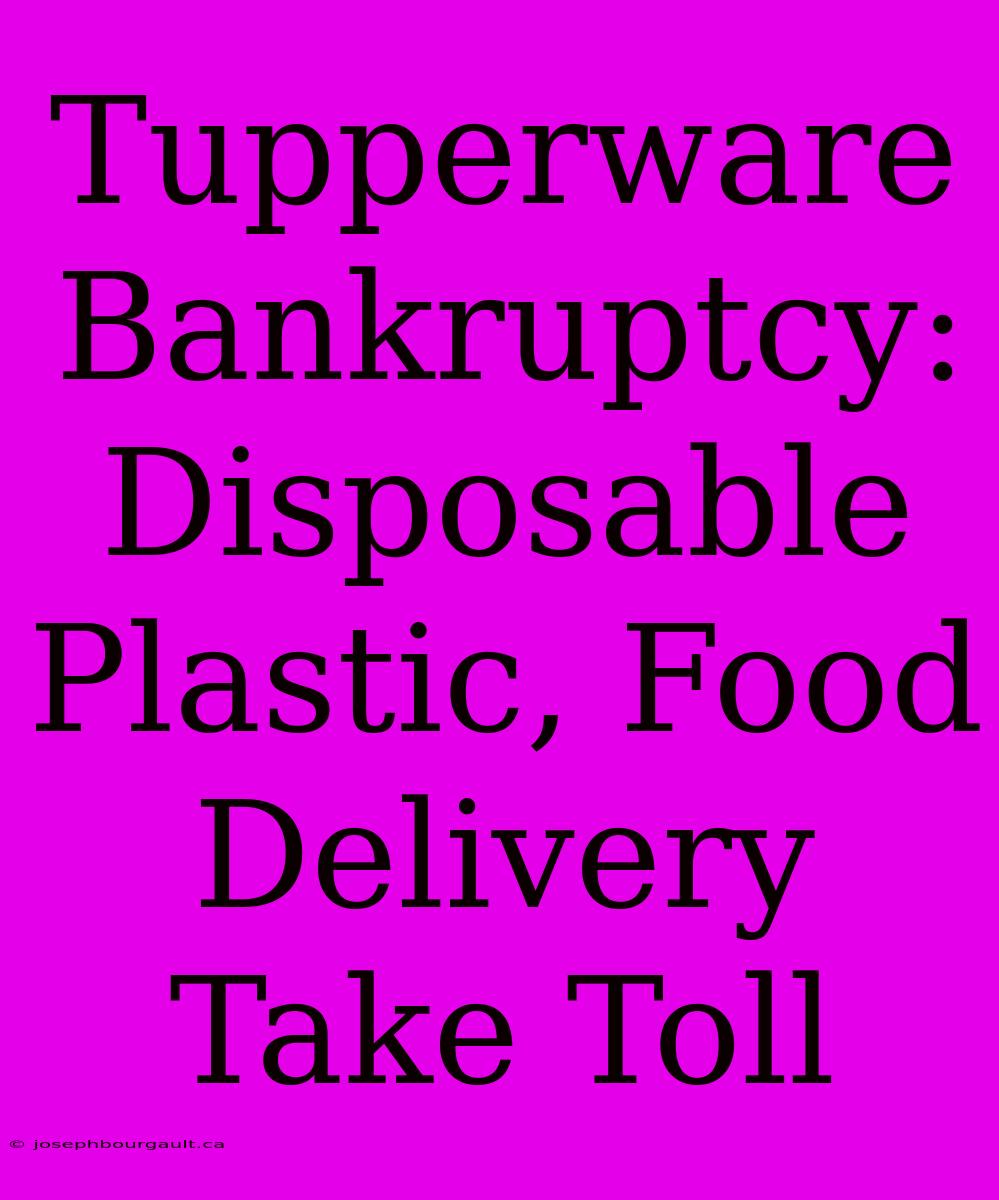Tupperware Bankruptcy: Disposable Plastic, Food Delivery Take Toll
The iconic brand Tupperware, known for its colorful, airtight containers, has filed for bankruptcy. This news sends shockwaves through the industry, highlighting the struggles of a company once synonymous with household organization and food preservation. While various factors contributed to Tupperware's downfall, two key culprits stand out: the rise of disposable plastic and the ever-growing food delivery market.
The Disposable Plastic Revolution
For decades, Tupperware's success rested on its promise of reusable, durable containers, fighting against food waste and promoting sustainability. However, the tides turned as disposable plastic became increasingly ubiquitous. Single-use plastic wraps, bags, and containers became readily available, cheap, and convenient, appealing to busy consumers who prioritize speed and affordability.
This shift in consumer behavior, coupled with heightened environmental concerns regarding plastic pollution, led to a decline in demand for Tupperware's products. The company struggled to compete with the convenience and low cost of disposable options, despite its long-standing reputation for quality and longevity.
The Rise of Food Delivery Services
Another significant blow to Tupperware came from the explosion of food delivery services. The popularity of platforms like Uber Eats, DoorDash, and Grubhub has reshaped how people consume food. Consumers increasingly rely on pre-packaged meals delivered directly to their doorsteps, reducing the need for home-cooked meals and, in turn, the need for storage containers.
Tupperware's traditional model of selling products through home parties and direct sales faced challenges in adapting to this evolving consumer landscape. The convenience and immediacy of online food delivery services further eroded the relevance of Tupperware's products, particularly for younger generations accustomed to this on-demand lifestyle.
A Legacy in Question
Tupperware's bankruptcy is a stark reminder of the ever-changing consumer landscape and the importance of adapting to new trends. The company's iconic status and long-lasting legacy are now in question. It remains to be seen whether Tupperware can reinvent itself to survive in the face of these challenges. Perhaps focusing on eco-friendly solutions, innovating with sustainable materials, or finding new ways to integrate with the growing food delivery market could provide a path forward.
The future of Tupperware hinges on its ability to navigate these changing dynamics and re-establish its relevance in a world where convenience and disposability are increasingly valued. Only time will tell if the brand can bounce back and retain its place in the kitchen.

